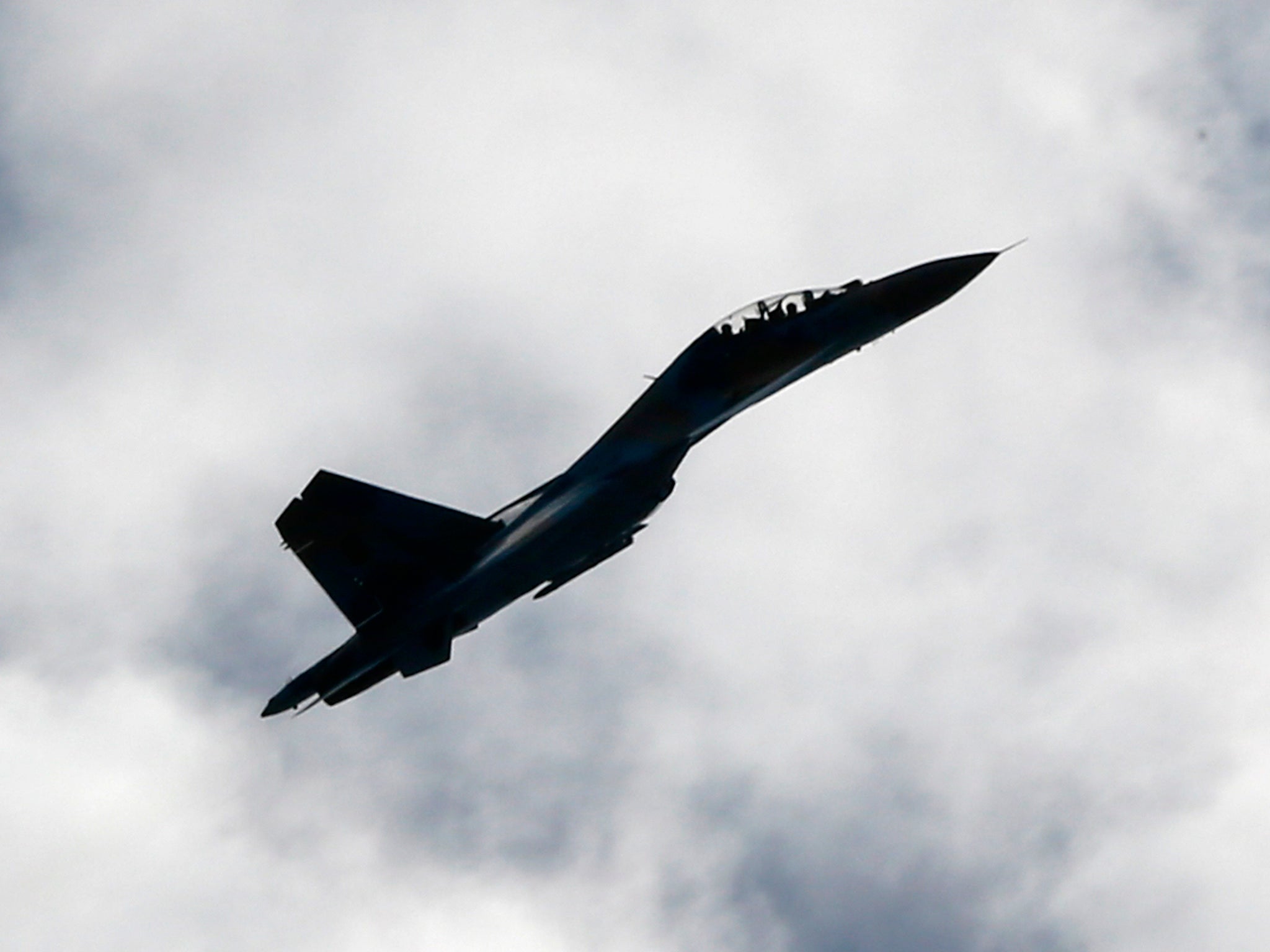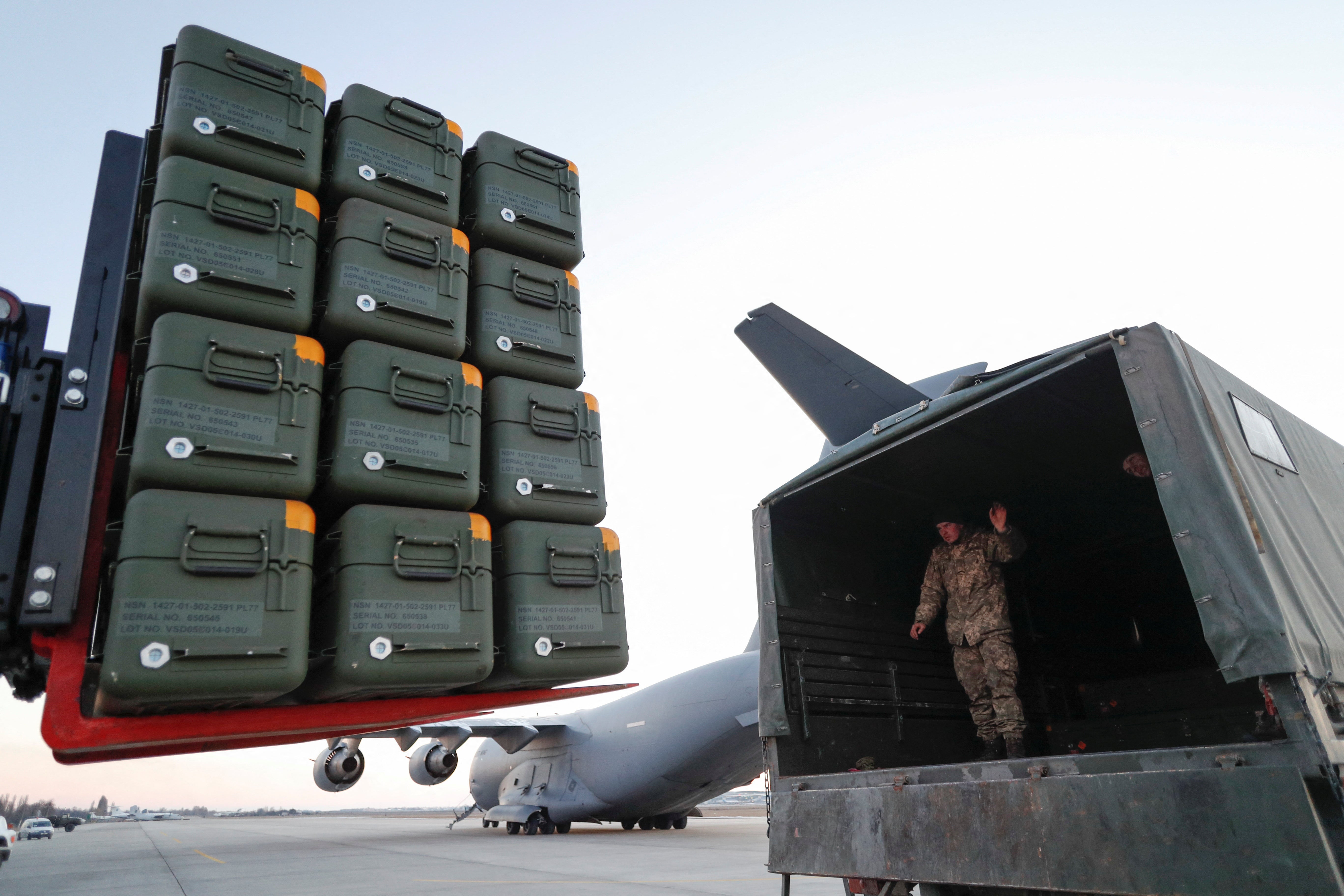
Russia’s brutal invasion of Ukraine, now entering its third month, has seen devastating missile attacks striking cities like Kyiv, Kharkiv and Mariupol as Vladimir Putin’s forces adopt brutal siege warfare tactics, similar to those it has deployed in the past in Chechnya and Syria.
Ukraine’s president Volodymyr Zelensky has meanwhile continued to lead the resistance from the streets of the capital, tirelessly rallying the international community for support.
At the country’s western border, an estimated 5 million people have now fled for neighbouring Poland, Hungary, Slovakia, Romania and Moldova, creating a major humanitarian crisis as the fighting persists in the east.
Russia has most recently concentrated its energies in securing the industrial heartland of the Donbas, where fierce fighting has raged between pro-Russia separatists in Donetsk and Luhansk since 2014.
The international community continues to denouce the Kremlin’s actions and have imposed tough economic sanctions on Russian banks, businesses, politicians and oligarchs as western corporations withdraw from the country, its sports stars are banned from international competitions and Mr Putin finds himself presiding over a pariah state on the world stage.
Nato members continue to extend diplomatic support, aid and weapons to Ukraine but refuses to impose a no-fly zone over the country for fear of being drawn into a much larger war over Eastern Europe, leaving the country in a lonely fight to retain its independence.
Although Russia’s military is significantly larger than Ukraine’s in every area, Mr Zelensky’s forces still pose a threat and at the very least can mount a defence against Russia’s ongoing invasion as the world has seen since the outbreak of war on 24 February.
Here’s a look at the combatant’s comparative capabilities.
How big is Ukraine’s air force?
According to the Flight International 2022 World Air Forces database, Ukraine’s Air Force had 210 military aircraft as of the war’s start date, including 98 combat aircraft.
These consist of Soviet-made MiG-29s and three types of Sukhoi jets.
However, Russia has a significantly larger military air force, with active aircraft totalling 3,863, according to Flight International’s database, with almost 15 times more combat planes than Ukraine.

Despite its smaller arsenal, Ukraine’s ministry of defence have claimed that, as of 26 April, it has downed an estimated 52 Russian aircraft in total.
How big is Russia’s army?
Since 2014-15, Ukraine has tripled its defence budget in an attempt to improve its military and also comply with standards demanded to join Nato as an entry requirement.
The increased investment has helped Ukraine’s army measure up to Russia, although it had just 125,600 soldiers compared to Russia’s 280,000 at the outset of the present hostilities.
In terms of total military personnel, Russia’s 900,000 active men and women trumps Ukraine’s 196,600.

Ukraine also has 900,000 reserve personnel – those who have received military training in the last five years – compared with Russia's 2 million.
They have more than three times the amount of artillery, six times the number of tanks and almost seven times more armoured vehicles than the Ukrainians.
The Russian navy operates 74 warships and 51 submarines, compared with Ukraine's two warships.
Military analysts said at the commencement of the war that Ukraine's anti-aircraft and anti-missile defences were weak, leaving it highly vulnerable to Russian strikes on its critical infrastructure.
They expected Russia to seek to use its superiority in electronic warfare to paralyse its adversary's command and control and cut off communications with units in the field.
What weapons does Ukraine have?
Several western nations have come to the aid of Ukraine to bolster its military defences.
The US has provided more than $2.5bn (£1.87bn) in military aid since 2014, including Javelin anti-tank missiles, coastal patrol boats, Humvees, sniper rifles, reconnaissance drones, radar systems, night vision and radio equipment.
Turkey has sold Kyiv several batches of Bayraktar TB2 drones while Britain supplied Ukraine with a reported 2,000 short-range anti-tank missiles in January and has sent British Army specialists in to deliver training ever since the annexation of Crimea by Mr Putin’s forces in 2014.
Here is a list of some of the weapons Ukraine has and what they do.
Javelin anti-tank guided missiles
What are they for: The anti-tank missiles use infrared systems to lock their targets meaning troops do not need to aim.

The missile is capable of flying up to 490ft into the air before connecting with a target.
Next Generation Light Anti-tank Weapon
What are they for: This weapon is another anti-tank missile, of which the UK has donated 2,000 units to Ukraine.

It is capable of flying at speeds of 440 miles per hour using an inertial navigation system to fly to a target vehicle.
Stinger missiles
What are they for: Latvia and Lithuania have donated Stinger missiles, which are fired from a Man-Portable-Air-Defence System (MANPADS) that uses infrared homing technology to search and strike flying targets.

It has been used by Ukrainian forces to bring down Russian aircraft.
Bayraktar TB2 drones
What are they for: The drones supplied by Turkey and is capable of 24-hour flights at an altitude of 24,000 feet and carrying a payload of 150kg.

It is capable of carrying out aerial strikes against tanks and bunkers, with a maximum altitude of five miles to avoid enemy machine guns.
The drone can also navigate even if it loses GPS signal, however, it is unclear whether they have been used in Ukraine yet.
Is Ukraine running out of weapons?
While up-to-date information from the frontline can be hard to substantiate, reports suggest Ukraine may be running out of the weapons.
Mr Zelensky has called for more supplies from Western nations to help it sustain its resistance against Russia’s advance.
Western officials have been quoted as saying that Kyiv’s troops are “expending a lot of ordnance” and Dmytro Kuleba, Ukraine’s foreign minister, is understood to have warned privately earlier in the conflict that his country had “two weeks” until it ran out of anti-tank and anti-aircraft missiles – a situation that has not yet been realised thanks to military shipments from Europe and the US.
Does Ukraine have nuclear missiles?
No. However, the country did host approximately one-third of the Soviet Union’s nuclear arsenal on its soil until the dissolution of the USSR in 1991.
That included 130 UR-100N intercontinental ballistic missiles (ICBM) with six warheads each, 46 RT-23 Molodets ICBMs with 10 warheads each, as well as 33 heavy bombers and roughly 1,700 warheads in all.
In 1994, Ukraine agreed to destroy the weapons and to join the Treaty on the Non-Proliferation of Nuclear Weapons.
A sunflower-planting ceremony was held at the Pervomaysk missile base in 1996 in celebration of the removal of nuclear arms from Ukraine.
The Independent has a proud history of campaigning for the rights of the most vulnerable, and we first ran our Refugees Welcome campaign during the war in Syria in 2015. Now, as we renew our campaign and launch this petition in the wake of the unfolding Ukrainian crisis, we are calling on the government to go further and faster to ensure help is delivered. To find out more about our Refugees Welcome campaign, click here. To sign the petition click here. If you would like to donate then please click here for our GoFundMe page.







